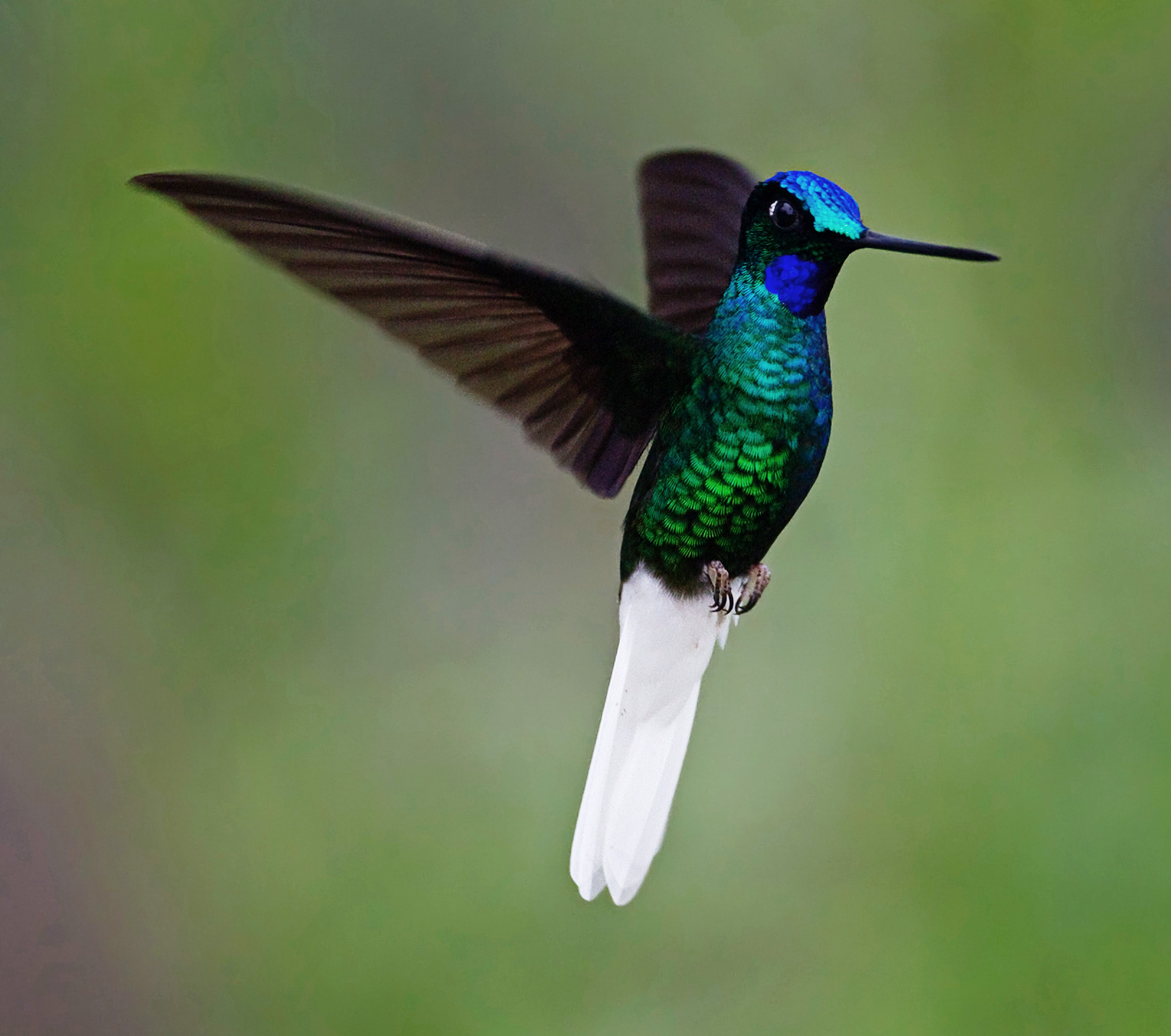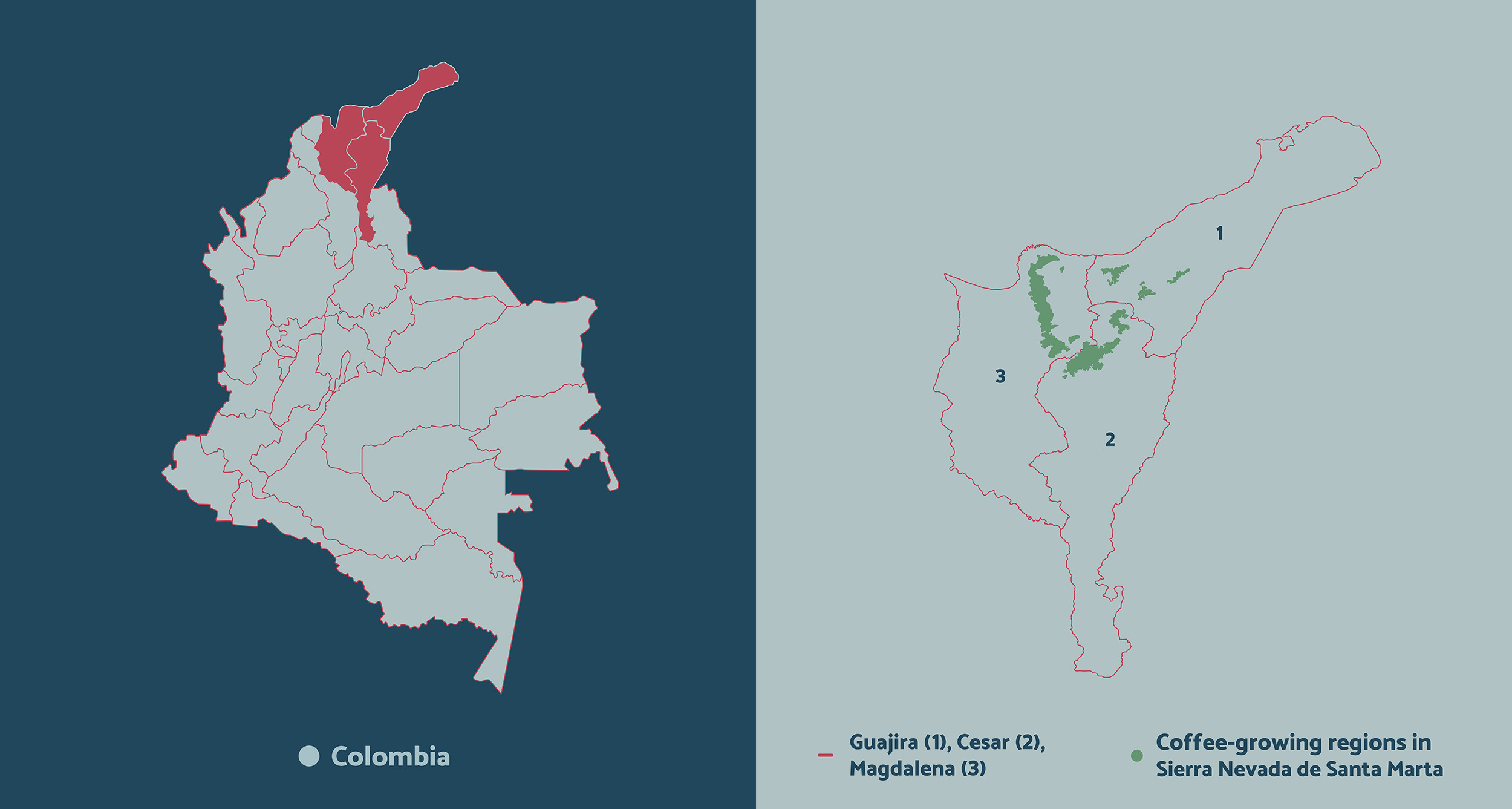Harvest: September–February
Elevation: 500–1,900 metres (1,600–6,200 feet) above sea level
Rainfall: 1,200–2,700 millimetres (47–106 inches)
Temperature: 16°C–22°C (61°F–72°F)
The Sierra Nevada de Santa Marta is an isolated mountain range on Colombia’s north coast, entirely separate from the Andes ranges. The highest peaks, at around 5,700 metres above sea level, lie just 42 kilometres from the Caribbean coast.
 The Sierra Nevada de Santa Marta, where it meets the sea in Magdalena department
The Sierra Nevada de Santa Marta, where it meets the sea in Magdalena department
The Sierra Nevada lies at the intersection of three departments: Guajira, Magdalena, and Cesar. The FNC obtained a Denomination of Origin (DO) for ‘Sierra Nevada’ in 2017, which covers all of the coffee-growing regions in the three departments. Some of these regions are not part of the Sierra Nevada de Santa Marta itself but are located on the eastern cordillera of the Andes, close to the border with Venezuela. Accordingly, the statistics in this lesson refer to all the coffee grown in the three departments.
The Sierra Nevada, especially in Guajira, is one of the regions with the highest concentrations of Indigenous Peoples in all of Colombia (OCHA 2005), and more than 10% of the population live in Indigenous reserves (UNESCO 2020).
The Sierra Nevada de Santa Marta, a biodiversity hotspot, was designated a UNESCO biosphere reserve in 1979 (UNESCO 2020). The ecosystem is under constant threat, however, from both legal and illegal forms of exploitation such as mining and agriculture, including coca growing (Paz Cardona 2019).
 The white-tailed starfrontlet, a species of hummingbird endemic to the Sierra Nevada de Santa Marta
The white-tailed starfrontlet, a species of hummingbird endemic to the Sierra Nevada de Santa Marta
Deforestation in the Sierra Nevada since the 1950s has severely reduced water availability in the region, to the extent that two rivers have completely dried up. Coffee growers in the region contribute to the protection of some of the remaining original forests by using them as shade trees for coffee plants,
